Whites and Washing Soda: How to Get Your White Inventory *a
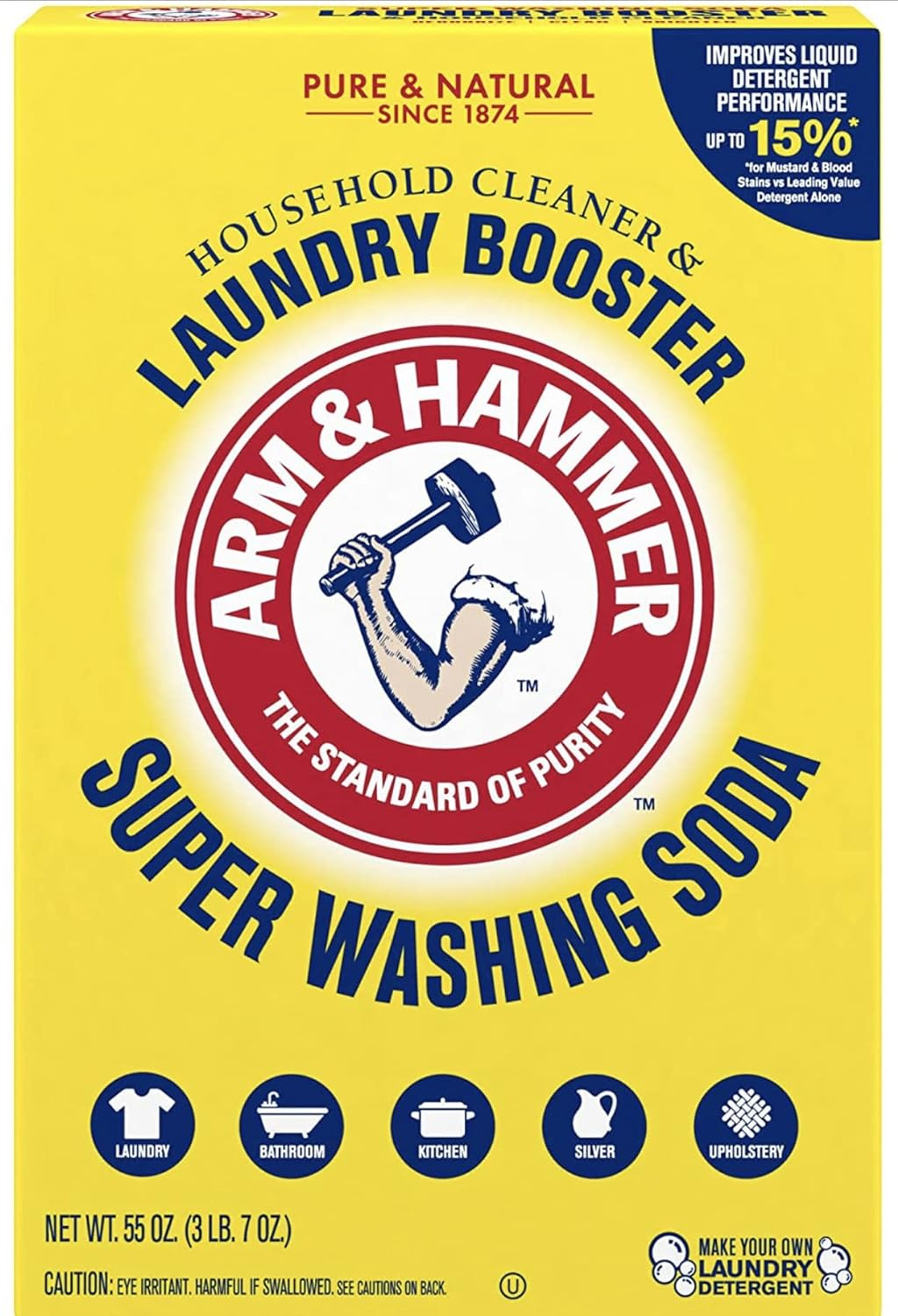
If you've ever passed on white linen or cotton at the thrift store because it was looking a little lackluster, a box of washing soda may just pay for itself in sales opportunites. Note: links to products mentioned here have referral codes to support ClosetWitch. But much of this stuff you can find at your local grocery store!
Understanding Washing Soda
What is Washing Soda?
Washing soda, also known as sodium carbonate or soda ash, is a versatile household cleaner with remarkable laundry benefits. Derived from natural sources, washing soda is a water softener and an effective cleaning agent. It boosts the efficiency of laundry detergents by enhancing their cleaning and stain-lifting capabilities.
How Does Washing Soda Work?
Washing soda raises the pH level of water, which helps to effectively remove dirt, grease, and odors from clothes. It also softens water, allowing detergents to lather more easily and work more efficiently.
The Benefits—and Savings Advantages—of Using Washing Soda in Laundry
- Stain Removal: Washing soda is highly effective at tackling tough stains such as grease, oil, and wine, reducing the need for repeated treatments, soaks, or washings.
- Whitening: It brightens white clothing and revives dingy items, without the yellowing or weaking risks of bleach.
- Deodorizing: Washing soda helps neutralize odors, leaving clothes smelling fresh and clean, reducing your needy for pricey Febreze.
- Softening Water: If you live in an area with hard water, adding washing soda to your laundry can help soften the water, allowing your detergent to work more effectively in smaller amoutns.
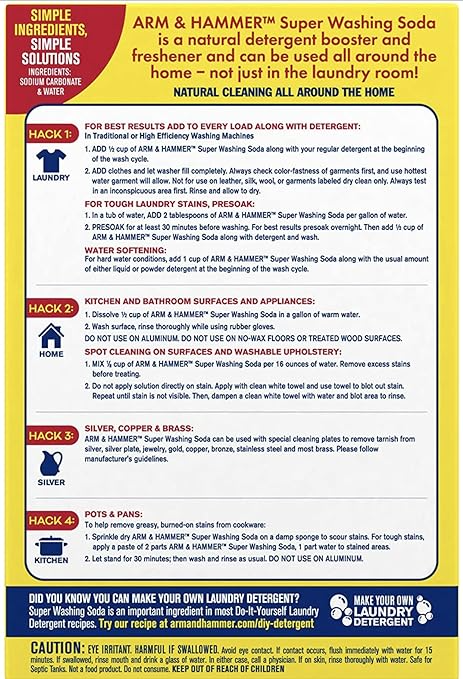
How to Use Washing Soda in Laundry
- As a Laundry Booster: Add ½ cup of washing soda to your regular laundry detergent to amplify its cleaning power.
- Stain Pre-Treatment: Create a paste with washing soda, water, and a few drops of dish soap, then apply it to tough stains before laundering. I personally *love* using a quick blast of Dawn Powerwash, and I like to work the paste in with a soft, wet toothbrush and let sit a few minutes before running through the wash. (PS. using Dawn Powerwash and a toothbrush solo is a good alternative to making a paste while stain-treating sensitive white/ivory/cream fabrics in wool, silk, or cashmere. But be very, very careful when trying this with dyed items—the power of Powerwash should not be underestimated!).
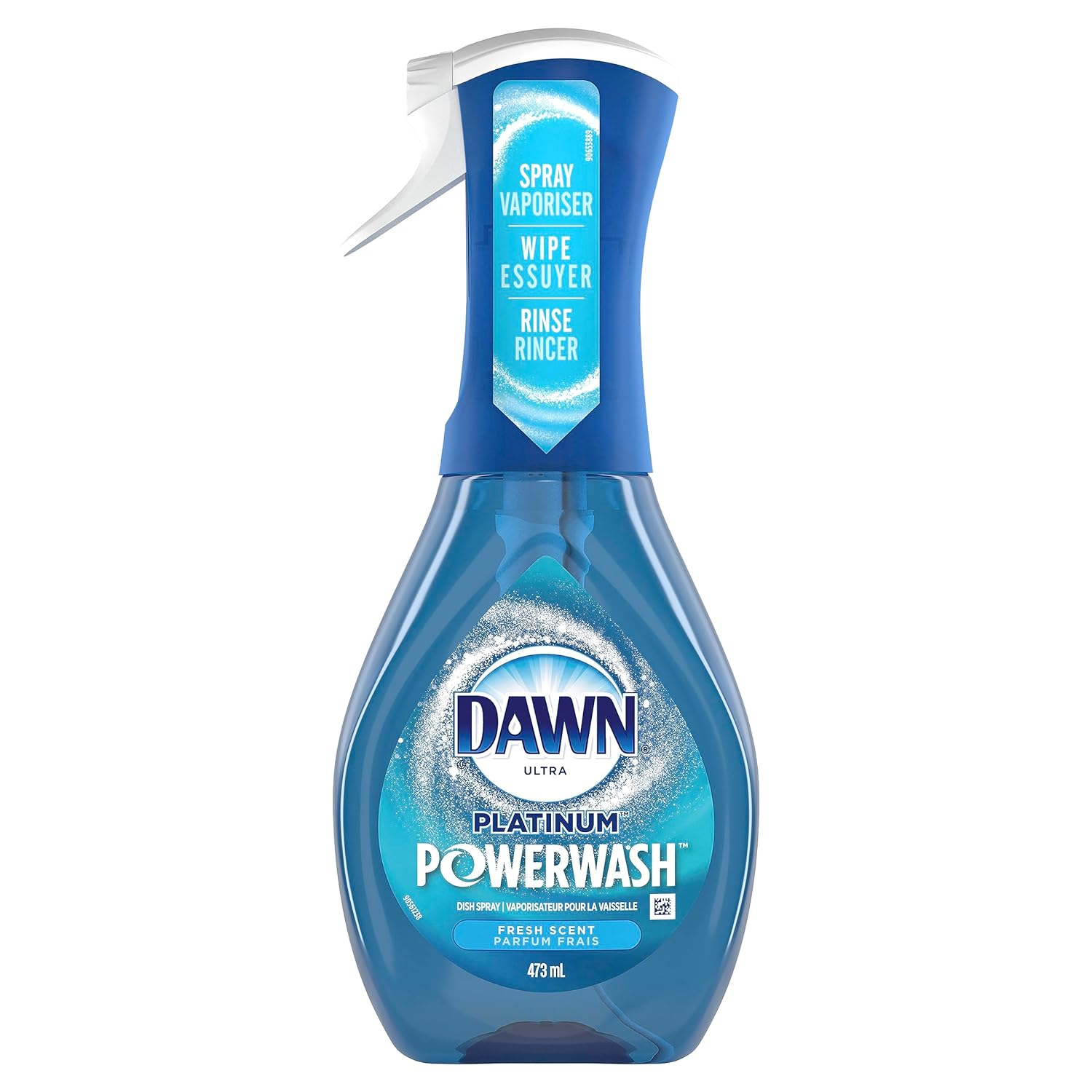
- Whitening Soak: For whitening whites, create a soaking solution with washing soda and warm water. Start the washing machine with the hottest water the fabric can handle, then pause just the agitation is wrapping up, but before the rinse cycle starts. Leave the garments for an hour—longer for dingy whites in sturdy fabrics, like 100% cotton or linen—before resetting the agitation cycle and then letting the washing proceed as usual. I've had incredible results with this and highly recommend. Try soaking your graying white bath towels over night to get a sense of the difference this can make.
Safety Precautions for Laundering with Washing Soda
- Skin Irritation: Washing soda can cause skin irritation, so it's essential to wear gloves when handling it, especially in its powdered form.
- Ventilation: When using washing soda, ensure the area is well-ventilated to avoid inhaling the fine particles. Wear a mask while stain treating to protect yourself at close range. I use my COVID-era cloth masks for this and big sweater shaving projects.
Fabrics Incompatible with Washing Soda
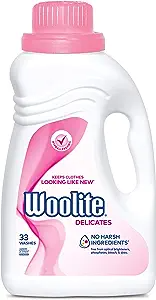
While washing soda is a versatile cleaning agent, there are certain fabrics on which its use is not recommended. Due to its powerful nature, washing soda can potentially damage delicate fabrics such as wool, cashmere, silk, and items with special finishes or coatings.
Here are some fabrics to avoid using washing soda on:
- Wool/Cashmere: Washing soda's alkaline nature can break down the fibers of wool, leading to shrinkage and distortion of the fabric at best, and a Swiss Cheese effect at worst. It's advisable to use gentle, wool-specific detergents for cleaning wool items, like Woolite. Try working in a bit of gentle detergent in with a soft, dampened toothbrush to treat stains, adding a little white vinegar for tough spots as needed.
- Silk: Delicate silk garments can be negatively affected by washing soda, as it may weaken the fabric and cause loss of luster. It's best to opt for mild detergents, or, for big ticket items, seek professional dry cleaning. Try a little diluted white vinegar, perhaps with a drop or two of Woolite, to stain treat. But again—be careful with colors! Test an inconspicuous area first if working with dyed silk.
- Special Finishes/Coatings: Fabrics with special finishes or coatings, such as waterproof (rain or snow jackets) or moisture-wicking garments, may be compromised by washing soda. The strong alkalinity of washing soda can affect the functionality and integrity of these coatings. Dish soap and a wet toothbrush alone are recommended, again, adding a little white vinegar if needed.
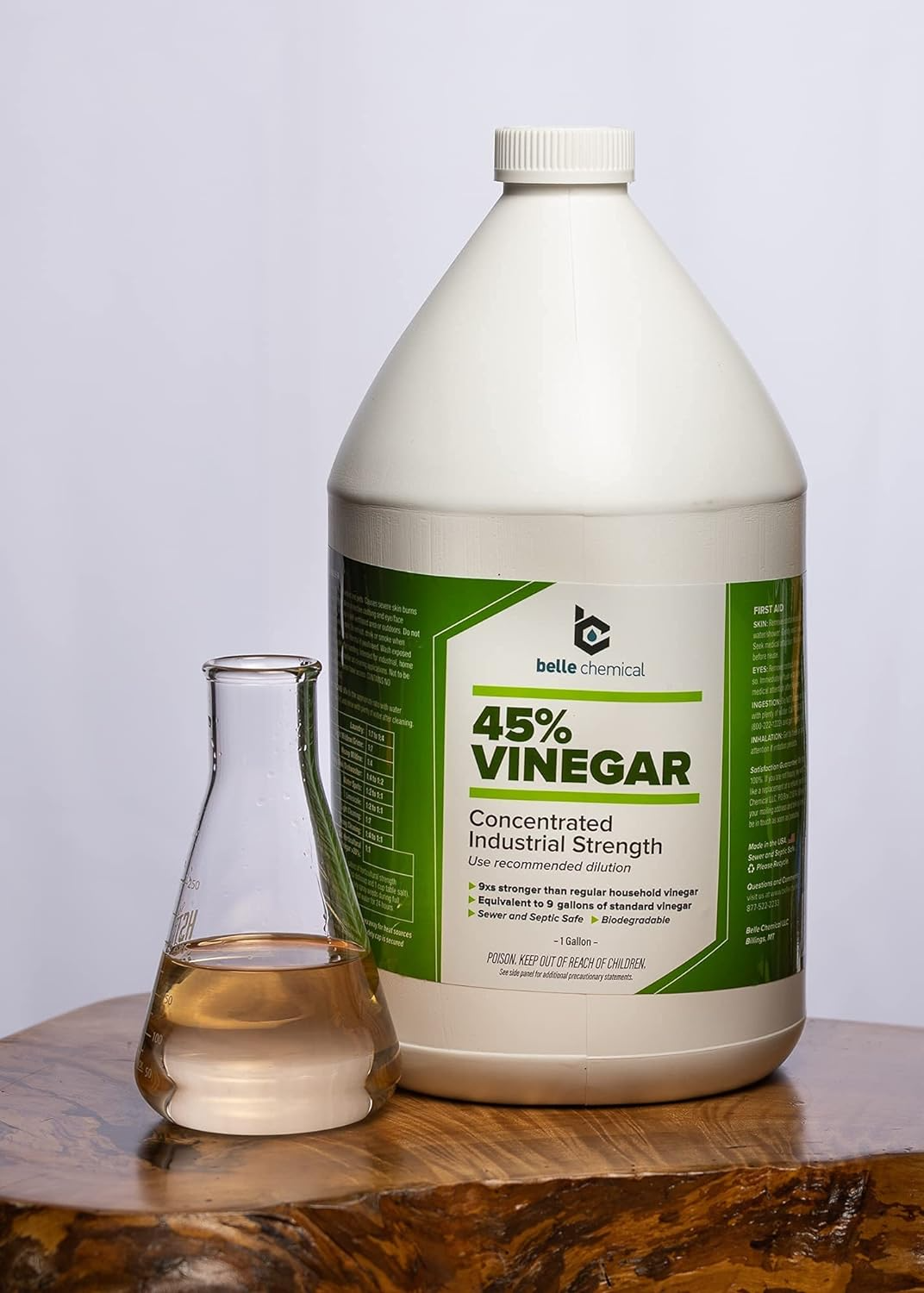
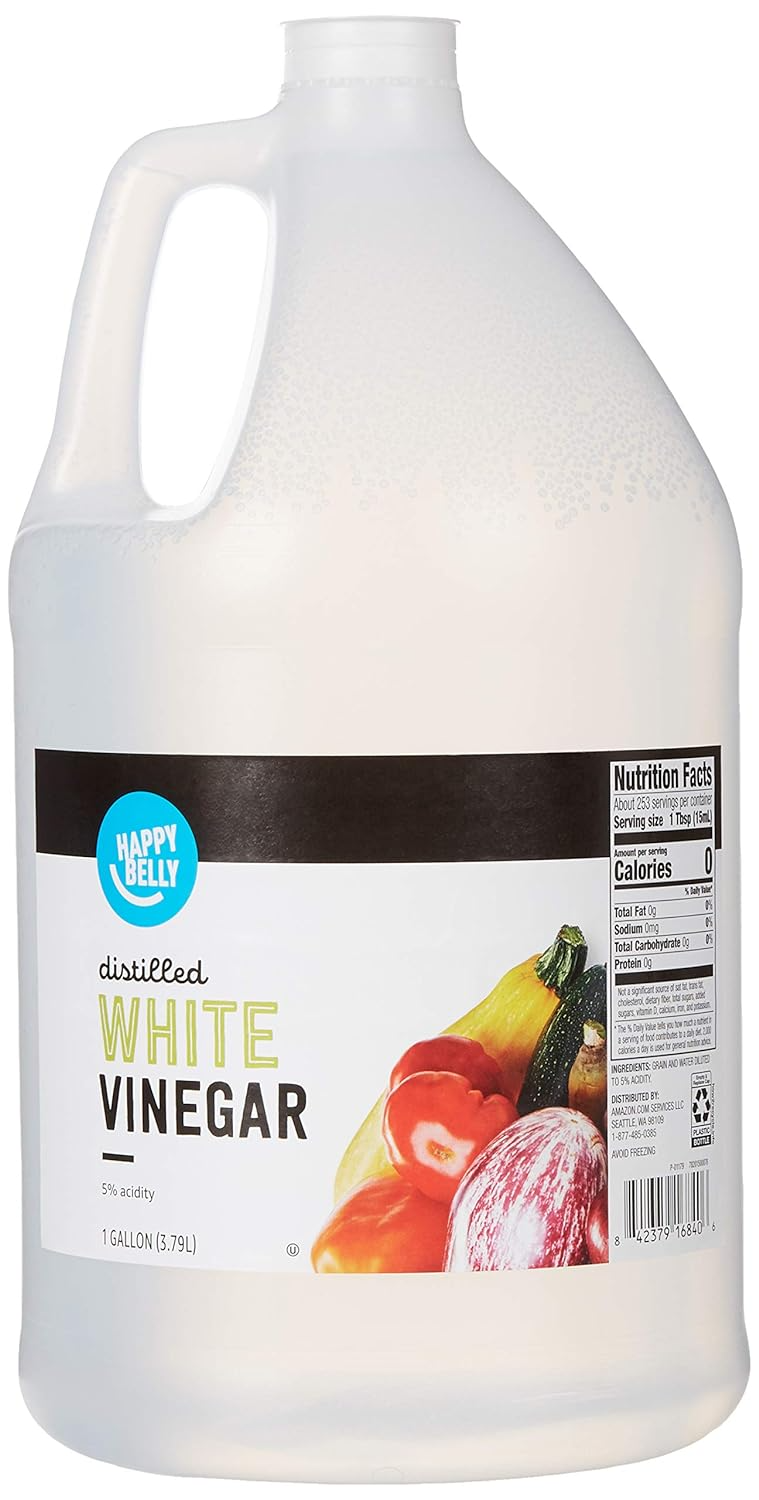
The Difference Between Washing Soda and Baking Soda
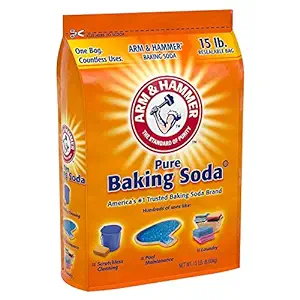
Washing soda and baking soda, while closely related, have distinct differences in composition and uses.
Composition:
Baking Soda:
- Chemical Name: Sodium Bicarbonate (NaHCO3)
- pH Level: Slightly Alkaline
- Form: Fine Powder
Washing Soda:
- Chemical Name: Sodium Carbonate (Na2CO3)
- pH Level: Highly Alkaline
- Form: Coarse Granules
In a nut shell, washing soda has more grit for stain treating and more cleaning power for laundering, so you'll want to reserve it for your hardier, dirtier items.
Opting for baking soda instead? Use in the same way you would washing soda (with water and dish soap as a stain treatment, and in half-cup-per-load ratios for laundry). Avoid using baking soda, just as you would washing soda, on delicate fabrics like silk, wool, cashmere, or items with special coatings.
The Difference Between Washing Soda and Bleach
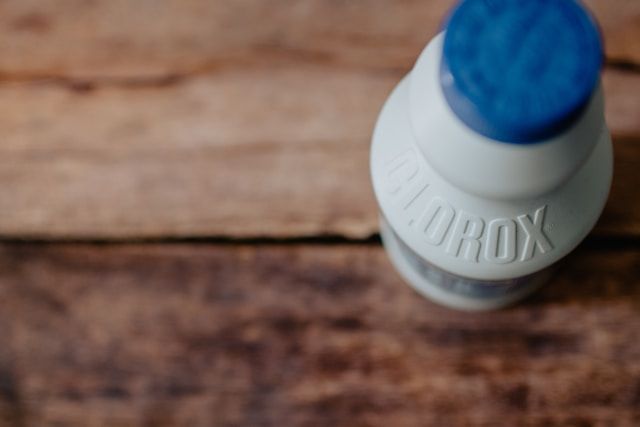
Washing soda and bleach are two distinct cleaning agents with different chemical compositions and uses.
Bleach:
- Chemical Composition: Typically contains sodium hypochlorite (for chlorine bleach) or hydrogen peroxide (for oxygen bleach)
- pH Level: Alkaline for chlorine bleach and neutral for oxygen bleach
- Form: Liquid or powder
- Primary Use: Functions as a disinfectant and a whitening agent. It effectively removes stains and brightens whites, but can be harsh on fabrics and may cause color loss or fabric damage if not used properly.
Can I Use Bleach *and* Washing Soda?
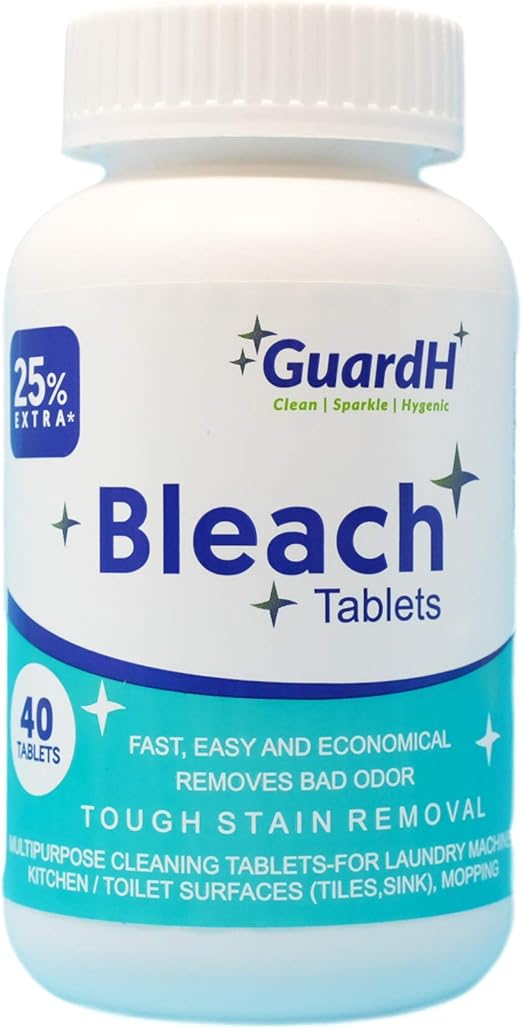
Dang, you have quite a situation on your hands! Yes, but not together. (Honestly, don't try mixing bleach with anything but detergent, like, ever, but especially vinegar. #justsaynotomustardgas).
Since washing soda primarily enhances cleaning and stain-lifting in laundry, try using the washing soda first to lift as much soil as possible, launder, then treat with bleach as needed next. Bleach can be tough on fabric and cause yellowing with excessive use, so I like to reserve it as a last resort.
Some precautions with bleach:
- Spot Testing: Before applying bleach to a larger area, conduct a spot test with diluted bleach on a hidden or inconspicuous part of the fabric to check for any adverse reactions. Never use bleach on wool, cashmere, or silk, and tread very carefully with colors (OxiClean may be your better bet with dyed items generally, but again, not with delicates).
- Dilution: Always follow the manufacturer's instructions for diluting bleach (ie. see the back of bottle or box). Using undiluted bleach directly on fabric can lead to discoloration and weakening of fibers.
- Ventilation: Ensure adequate ventilation when working with bleach to avoid inhaling fumes, and consider wearing a mask for additional protection, especially in enclosed spaces.
- Protection: Wear gloves and protective clothing to shield your skin and prevent any potential irritation caused by direct contact with bleach.
- Time Consideration: Limit the exposure of fabric to bleach according to the recommended duration, as prolonged contact can lead to damage or weakening of the material.
- Rinse Thoroughly: After treating fabric with bleach, thoroughly rinse or launder the material to remove any residual bleach and prevent potential damage over time. And careful what you throw in the washing machine directly after! I like to do a buffer load of lights or whites before washing dark items after I've used bleach in my machine.
Borax VS. Washing Soda
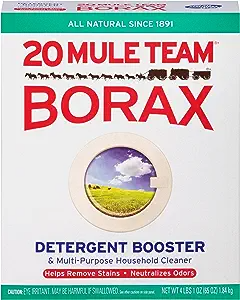
While washing soda is best for laundry-specific applications, Borax is great for general cleaning, so you may already have it on hand. Feel free to try it in place of washing soda in the same ratio for laundry or soaking.
The Bottom Line
By harnessing the cleaning potential of washing soda, you can transform your "meh" white inventory to "aw YEAH." From stain removal to whitening and deodorizing, its impact is unparalleled. Just remember to exercise caution with delicate fabrics and always prioritize safety when using washing soda.
Have you used washing soda in washing or stain treating your items? Any tips or precautions to share? Drop 'em below.
And most importantly... are you a part of the Powerwash Cult? (I'm sorry, not a cult, an organization that promotes love!)
Love and magic,
Cathy@ClosetWitch

